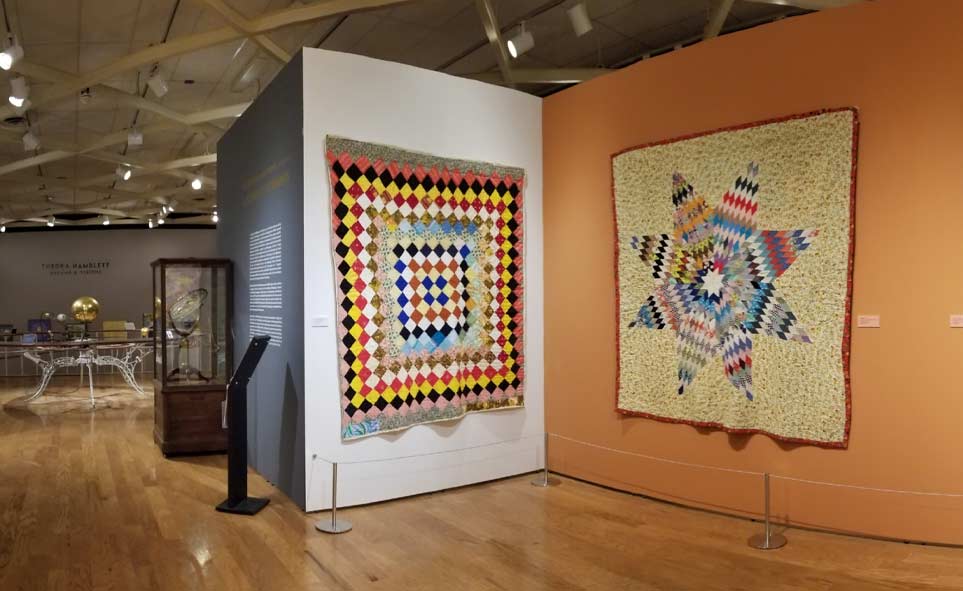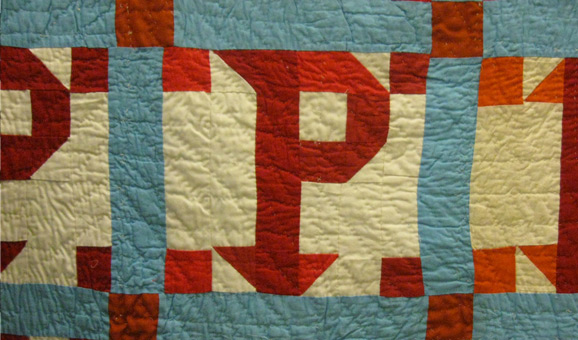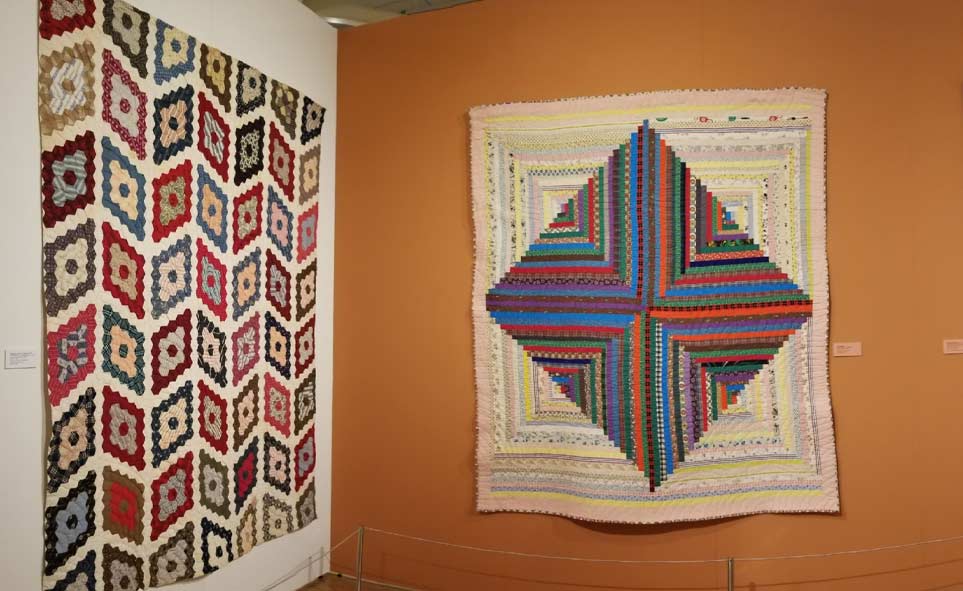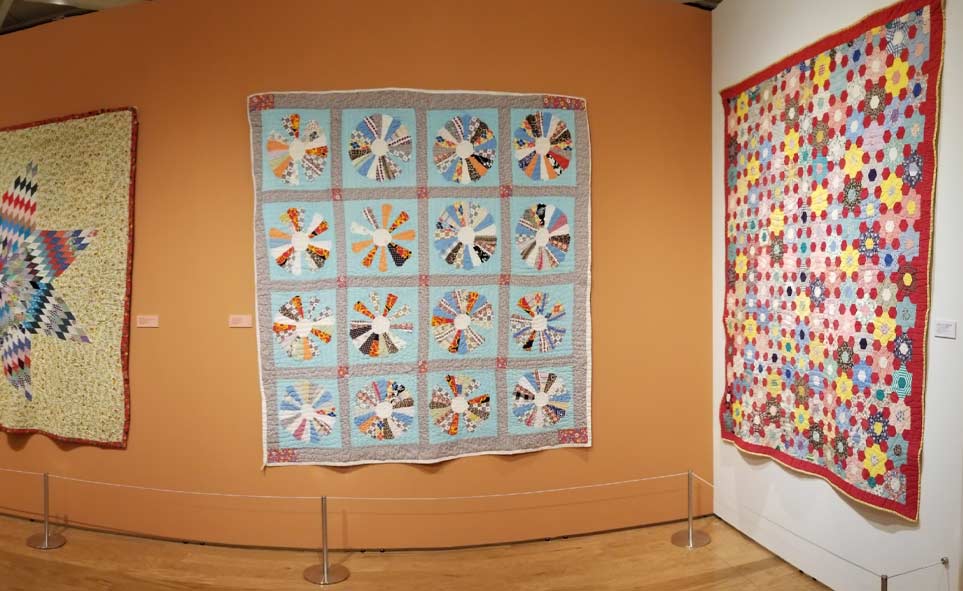American Quilts
The art of quilting can be found in nearly every culture. Quilters
define a quilt as three bound pieces of cloth: the decorative top, the
side displayed on a wall or bed, batting in between to keep you
warm, and a back to bind them all together.
Americans have created quilts for centuries, but the earliest
examples are rare. As Americans gained more time and resources,
they made quilts of new designs and delicate embellishments to
display in their homes. Quilts comprised of clothing and household
scraps were still traditionally utilitarian only. These quilts prevented
waste when fabric was expensive or inaccessible, such as the
American expansion out West, during wartime, the Great Depression,
or recessions. A quilter making a display quilt may have used finer
materials, larger blocks, and complex patterns. They would make the
quilt to commemorate a marriage, honor a deceased loved one,
celebrate a birth, or showcase their skill. When collectors and
scholars took notice of the innovation and expressions found in
American utilitarian quilts, such as those created in African American
communities, they found a wholly unique American art form, often
compared to jazz music for its spontaneity in pattern and color.
Quilts became prized for their craftsmanship and representational
documentation of the American experience. Through their makers’
narrative reflections, they illustrate their era’s attitudes. Primarily
a women’s craft, unique regional quilts have survived as family
traditions passed down. This exhibit celebrates the rich variety of
American quilt patterns and the unified spirit of perseverance that
has helped generations through many cold nights.




